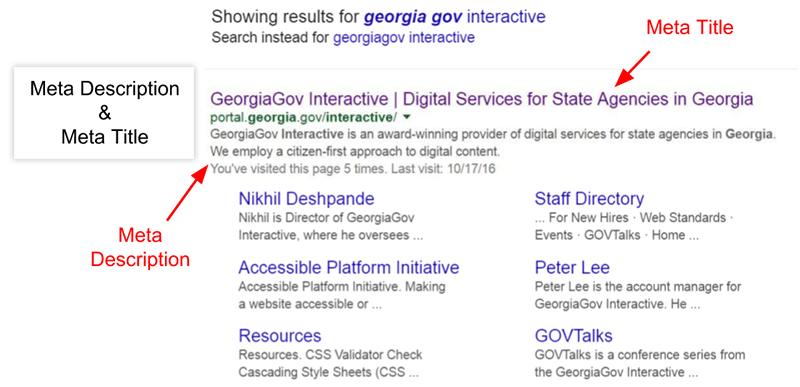
December 13, 2016
What Is User-Centered Content Strategy?

Lay the groundwork for a solid content strategy that focuses on what the user really wants.
Who are your users and what are their goals?
Before you begin a content strategy, let’s look at who you are serving. The secret sauce in successful content marketing is delivering the right content to the right people. In order to do this, you must determine what people want from your agency and what they hope to accomplish on your site? In other words, how well do you know your audience?
Personas
Personas are generalizations of personalities based on age, location and basic personality traits. Users are placed in a group of 4-5 different persona types. Some large companies pay big bucks for research firms to science the heck out of their users. Data-intensive, empirical research may include usability testing, surveys, analytics, field studies, interviews and market research.
However, it’s possible to create personas in-house as long as they are based on real clients and not dreamed up people. Non-empirical research — using information and facts from actual visitors is most practical for small companies or agencies aiming for user-centered content. By “crowdsourcing” your persona effort, you can save time and money on the persona effort.
Personas can include any kind of data pertaining to your market, but in general personas usually include:
- A “cute” group name.
Something catchy that personifies your group - A quote.
The quote reflects the over-all attitude or feeling of your persona - A bio paragraph.
A short description of the user journey or highlight the factors of the user’s personal or professional life - Common goals.
A task that needs completed or a problem they are trying to solve
To begin your own research, start collecting data in a spreadsheet. What industries do they work? What devices do they use? What attitudes do they share?
3 Steps to assemble your own user personas:
- Compile everything you know about your audience.
- Assemble your findings in a spreadsheet or template.
- Group like-people together into one persona.
Empathy Maps
Empathy maps dig deeper into the psyche of your audience and focus more on a sensory experience. If you really want to explore the “why” of your user’s behavior, truly understand their pain points and have some empathy.

Use
this
template
to create an empathy map for yourself.
Never take for granted that you know your audience as well as you think you do. Many agencies get stuck in their own head and make assumptions that are outdated or simply false. For some, taking the time to do user research for state agencies may feel like “overkill” or frivolous. Yet, we’ve seen state agency content managers surprise themselves as they were targeting millennials when in fact, their larger audience was senior citizens.
Empathy maps help you speak to the heart of your users. What they really think, feel see and say ultimately, helps you understand:
- Who is coming to your site?
- What do they want?
- Why do they want it?
Does your site deliver?
Once you have a good idea of who your users are and why they are there, take a look at your content from a fresh point of view. Are you serving them the information they want?
59 Second Rule
According to Nielsen Norman Group, most users stick around less than 59 seconds on a site.
Users leave your site when:
- They don’t find what they are looking for
- They don’t know what to do
Your homepage is often the first impression people have of your agency. It’s the most important thing to optimize. Remember, people may be coming to your site already confused or frustrated about a problem. Help them out by making your services clear and easy to navigate.
Does your homepage:
- Describe your agency in very few words?
- Identify who you help?
- Make your top 3-5 services easy to find?
How do you show up?
So you have the right content for the right people in a way that is easy and clear to navigate. Now the question is: How does your audience find you?
3 ways you show up for your users:
1. Metadata
The two pieces of metadata worth doing right is the meta title and the meta description. These are important because it’s how you show up in a search result.

This is the Search Engine Results Page (SERP). The meta title and meta description are things you can configure on any web page. Carefully chosen words helps you clearly describe the page that may entice a user decides to click.
2. Organic Search (SEO)
Choosing most common or popular keywords and keyword phrases may boost traffic to your site helping people find what they are looking for and hopefully, solve their problem. Being consistent with publishing content using those keywords will improve how you show up in SERP.
3. Information Architecture (IA)
Information Architecture refers to how you show information on our own site. It relates to organization / priority, labeling and navigation. When working with state agencies, we determine the IA during the discovery phase using a content inventory (to see what’s already being offered) and analytics to view user behavior.
Before you begin a content strategy, it’s crucial to understand who is using the information on your site? In order to determine the value proposition, do some research and lay out the groundwork with personas and empathy maps. Once you have a good idea of your personas, deliver the content that adds the most value. “Show up” with the goods in a way that can be easily be found.
